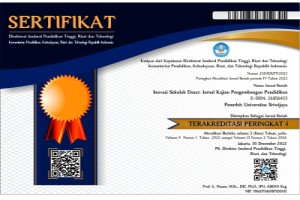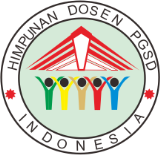Submissions
Submission Preparation Checklist
As part of the submission process, authors are required to check off their submission's compliance with all of the following items, and submissions may be returned to authors that do not adhere to these guidelines.- The submission has not been previously published, nor is it before another journal for consideration (or an explanation has been provided in Comments to the Editor).
- The submission file is in OpenOffice, Microsoft Word, or RTF document file format.
- Where available, URLs for the references have been provided.
- The text is single-spaced; uses a 12-point font; Arial, rather than underlining (except with URL addresses); and all illustrations, figures, and tables are placed within the text at the appropriate points, rather than at the end.
- The text adheres to the stylistic and bibliographic requirements outlined in the Author Guidelines.
Articles
Section default policyCopyright Notice
Please find the rights and licenses in Inovasi Sekolah Dasar : Kajian Pengembangan Pendidikan. By submitting the article/manuscript of the article, the author(s) agree with this policy. No specific document sign-off is required.
1. License
Inovasi Sekolah Dasar : Kajian Pengembangan Pendidikan governed by the Creative Commons Attribution license as currently displayed on Creative Commons Attribution-ShareAlike 4.0 International License.
2. Author(s)' Warranties
The author warrants that the article is original, written by stated author(s), has not been published before, contains no unlawful statements, does not infringe the rights of others, is subject to copyright that is vested exclusively in the author and free of any third party rights, and that any necessary written permissions to quote from other sources have been obtained by the author(s).
3. User Rights
Inovasi Sekolah Dasar : Kajian Pengembangan Pendidikan spirit is to disseminate articles published are as free as possible. Under the Creative Commons Attribution-ShareAlike 4.0 International License., Inovasi Sekolah Dasar : Kajian Pengembangan Pendidikan permits users to copy, distribute, display, and perform the work for purposes only. Users will also need to attribute authors and Inovasi Sekolah Dasar : Kajian Pengembangan Pendidikan on distributing works in the journal and other media of publications.
4. Co-Authorship
If the article was jointly prepared by more than one author, any authors submitting the manuscript warrants that he/she has been authorized by all co-authors to be agreed on this copyright and license notice (agreement) on their behalf, and agrees to inform his/her co-authors of the terms of this policy. Inovasi Sekolah Dasar : Kajian Pengembangan Pendidikan will not be held liable for anything that may arise due to the author(s) internal dispute. Inovasi Sekolah Dasar : Kajian Pengembangan Pendidikan will only communicate with the corresponding author.
5. Miscellaneous
Inovasi Sekolah Dasar : Kajian Pengembangan Pendidikan will publish the article (or have it published) in the journal if the article’s editorial process is successfully completed. Inovasi Sekolah Dasar : Kajian Pengembangan Pendidikan editors may modify the article to a style of punctuation, spelling, capitalization, referencing and usage that deems appropriate. The author acknowledges that the article may be published so that it will be publicly accessible and such access will be free of charge for the readers as mentioned in point 3.
Every accepted manuscript should be accompanied by "Copyright Transfer Agreement" prior to the article publication.
This work is licensed under a Creative Commons Attribution-ShareAlike 4.0 International License
Privacy Statement
The names and email addresses entered in this journal site will be used exclusively for the stated purposes of this journal and will not be made available for any other purpose or to any other party.





